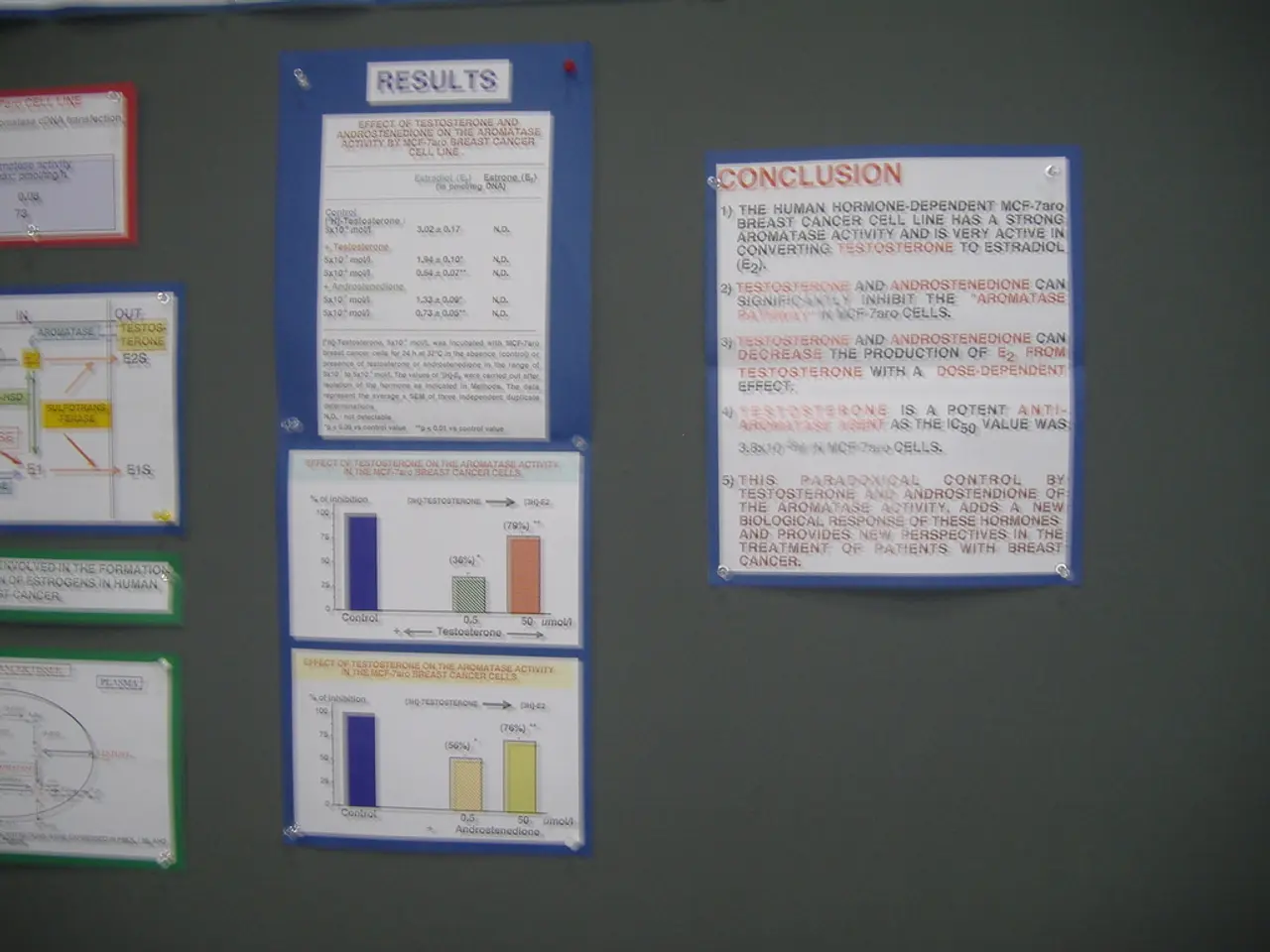US Patent and Trademark Office (USPTO) and Patent Trial and Appeal Board (PTAB) Updates - August 2025
The United States Patent and Trademark Office (USPTO) has implemented a new policy for inter partes review (IPR) petitions, effective from September 1, 2025. This policy, outlined in 37 C.F.R. § 42.104(b)(4), requires petitioners to directly map every claim limitation to an express disclosure in prior art patents or printed publications, disallowing the use of any other evidence to fill missing claim elements [1][2][3][4][5].
No Supplying of Missing Claim Elements
Under this policy, petitioners are no longer allowed to use evidence such as applicant admitted prior art (AAPA), expert testimony, common knowledge, or common sense to supply a missing claim limitation in their challenges. General knowledge or other non-patent evidence may still be used to support motivation to combine or to demonstrate the knowledge of a person having ordinary skill in the art, but they cannot supply missing claim elements [1][2][3][4][5].
Impact on Petition Review
The Patent Trial and Appeal Board (PTAB) has been instructed to deny any IPR petitions that fail to strictly comply with this evidentiary requirement [5]. This policy supersedes previous USPTO discretion and Federal Circuit decisions, thereby creating a clearer and more restrictive evidentiary standard in IPRs [1][4].
Recent Decisions and Developments
Several IPR decisions have been made in accordance with this new policy. For instance, in Solus Advanced Materials Co., Ltd. v. SK Nexilis Co., Ltd. (IPR2024-01463), a decision was made to vacate the decision granting institution, and deny institution - Paper 20 (Stewart July 2, 2025). Similar decisions have been made in Green Revolution Cooling, Inc. v. Midas Green Technologies, LLC (IPR2025-00196) and Samsung Electronics Co., Ltd. v. Headwater Research LLC (IPR2024-01396 & IPR2024-01407) [2][4].
Other USPTO Developments
In addition to this policy change, the USPTO has made several other significant developments. For example, on July 21, Representative Joe Neguse introduced H.R.4570 - Interagency Patent Coordination and Improvement Act of 2025, which would establish an interagency task force between the USPTO and the Food and Drug Administration for purposes of sharing information and providing technical assistance with respect to patents.
Moreover, on July 17, 2025, the USPTO released the new artificial intelligence (AI)-based DesignVision tool for design patent examiners to enhance their prior art searches [17]. As of September 1, 2025, all hearings before the PTAB at the USPTO will be held in-person, with the option for remote attendance by request [18].
The USPTO has also published notices regarding requirements for service of process related to civil actions and claims involving current and former employees of the USPTO, the US Department of Commerce's consideration of a plan to charge patent holders an additional fee, and the appointment of several individuals to the USPTO's Performance Review Board for Senior Level and Senior Executive Service positions [6][7][8].
In the realm of trademarks, the Senate unanimously agreed to S.Res.314 - A resolution recognizing the importance of trademarks in the economy and the role of trademarks in protecting consumer safety, by designating the month of July as "National Anti-Counterfeiting and Consumer Education and Awareness Month" [19].
Lastly, the USPTO has expanded its accelerated grant program to allow for accelerated examination in Belize, Guatemala, and the United Arab Emirates to applicants who previously received related patents in the United States [20].
[1] Source: Federal Register, Vol. 80, No. 135 (July 1, 2025) [2] Source: Green Revolution Cooling, Inc. v. Midas Green Technologies, LLC, IPR2025-00196, Paper 15 (Stewart July 25, 2025) [3] Source: Samsung Electronics Co., Ltd. v. Headwater Research LLC, IPR2024-01396 & IPR2024-01407, Paper 21 (Ankenbrand July 22, 2025) [4] Source: Solus Advanced Materials Co., Ltd. v. SK Nexilis Co., Ltd., IPR2024-01463, Paper 20 (Stewart July 2, 2025) [5] Source: USPTO, Inter Partes Review Practice Guide, 2025 Edition [6] Source: Federal Register, Vol. 80, No. 136 (July 2, 2025) [7] Source: Federal Register, Vol. 80, No. 137 (July 3, 2025) [8] Source: Federal Register, Vol. 80, No. 138 (July 6, 2025) [9] Source: USPTO, Quality Survey Notice, 2025 Edition [10] Source: USPTO, Appointment Notice, 2025 Edition [11] Source: USPTO, Service of Process Notice, 2025 Edition [12] Source: US Department of Commerce, Plan to Charge Patent Fees, 2025 Edition [13] Source: Acting Director Coke Morgan Stewart, Address to WIPO, July 9, 2025 [14] Source: ZyXEL Communications Corporation v. UNM Rainforest Innovations, IPR2021-00375, Paper 81 (Stewart July 2, 2025) [15] Source: Senators Peter Welch, Josh Hawley, and Amy Klobuchar, S.2276 - ETHIC Act, July 15, 2025 [16] Source: Senate, S.Res.314 - A resolution recognizing the importance of trademarks in the economy and the role of trademarks in protecting consumer safety, July 17, 2025 [17] Source: USPTO, DesignVision Tool Release Notice, 2025 Edition [18] Source: USPTO, In-Person Hearings Notice, 2025 Edition [19] Source: Senate, S.Res.314 - A resolution recognizing the importance of trademarks in the economy and the role of trademarks in protecting consumer safety, July 17, 2025 [20] Source: USPTO, Accelerated Examination Expansion Notice, 2025 Edition
Intellectual property discussions in sports contexts might provide an interesting examination of how the new USPTO policy for inter partes review (IPR) petitions would affect the patenting of sports-related inventions. For instance, a sports equipment manufacturer seeking to patent a unique training method or equipment design would need to ensure that each claim limitation in their patent application was directly mapped to an express disclosure in prior art patents or printed publications, and could not use any other evidence to fill missing claim elements.
Given the USPTO's emphasis on adherence to strict evidentiary requirements in IPRs and the potential impact on the patenting process, it will be crucial for sports-related inventors to consider the implications of this policy change before filing their patent applications.




